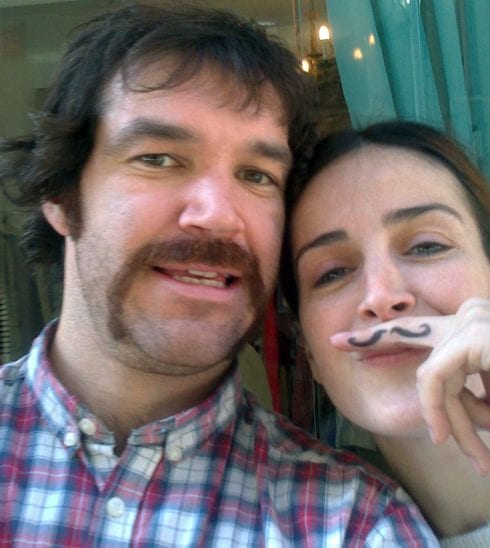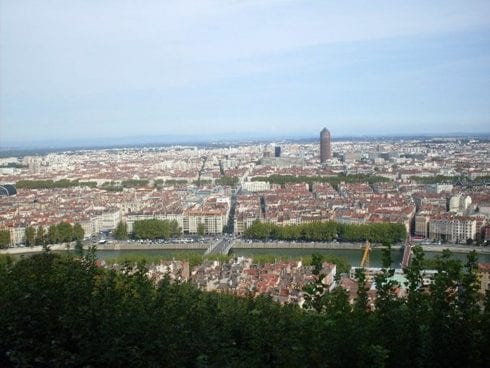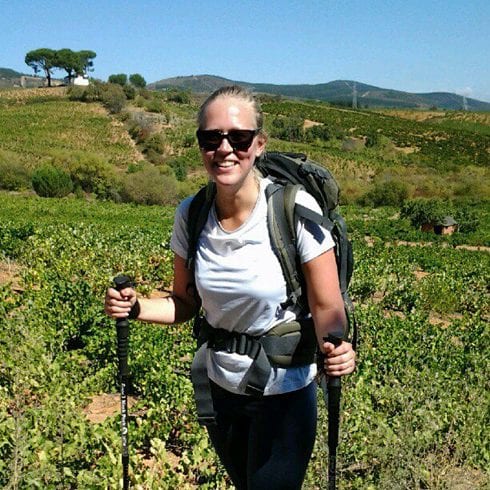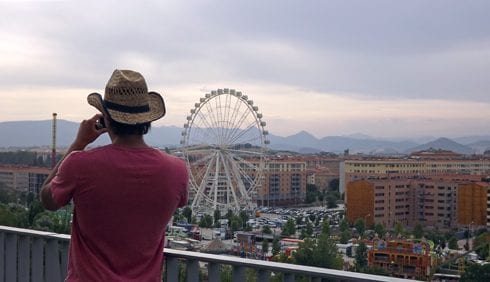THE carnivals of Navarra are almost prehistoric in ritual and rural legend. The preservation of carnival tradition is taken very seriously by the region’s communities. Three young English teachers had a unique insight into these traditions during the recent carnival period. Their experiences ranged from being whipped at the ankles by blood covered monsters to dressing up as a solar panel.
One of the most well-known carnivals is in Lanz, a small town 25 km from Pamplona. The parade begins at midnight on the first day of the carnival with cries and shouts from Ziripot, a chubby character dressed in straw-filled sacks, who is comically and consistently pushed over by Zaldiko. Luckily Ziripot’s falls are cushioned by his big straw body. Zalidiko, wild and untameable, is a man disguised as a horse. He is encircled by young dancers called Txatxos while the spectators are taunted by more sack-wearing Perretzaileaks. And that’s just the first night!
The road from Pamplona to Lanz was once a treacherous route plagued by holdups and highway robberies. The main character of the parade is Miel Otxin. According to legend, he was an infamous bandit that terrorized the area. His appearance is clown-like. He wears a psychedelically patterned shirt and a tall cone-shaped hat decorated with bright rings of colour made from scrunched up tissue paper. People dress up in this ensemble and walk through his historical territory. On the final day of the carnival, the villagers carry a reincarnation of the evil Miel Otxin through the streets. The procession culminates with a 5th of November type public burning of the protagonist. It is a dark ritual, but it is also really quite funny and ends in a vibrant village feast full of clowns and hessian sacks.
Similar themes are represented in all the carnivals in the region. An atypical evil character is always present and therefore it is not for the faint-hearted.
One English teacher described her experience in the town of Alsasoa. People of this town dress up in animals skins and balance huge ram horns on their head. They carry wooden pitchforks which they frighten the audience with on their passage through the town. This young teacher had her ankles whipped by these crazed monsters dripping with blood. (I forgot to mention the blood that is thrown over the costumes for that authentic horror movie feel). She fled screaming all the way into the dining tent where a traditional feast was served and the evil quickly evaporated.
There are varying levels of carnivals in this region, some are dark and mysterious in origin, others are parades with less sinister characters, such as the baby-tossing male nannies in Bera and Alzate, but they are all taken extremely seriously.
In the schools of two more teachers I’ve been speaking to, the costume design, dance choreography and dress rehearsals for their carnivals had been going on since September.
In the village of Isaba, the school’s theme was cinema, and the commitment was huge. The teacher of class 6, a strapping dark Basque man with a very prominent beard and strong shoulders, dressed up as Princess Fiona for their interpretation of the song Accidently in Love from Shrek 2. The little ones were dressed as sheep who waddled around in big balls of fluff. There was even a controversial and slightly bizarre Costa Concordia (the ill-fated Italian cruise ship) fashioned out of a shopping trolley. My friend dressed up as a penguin and led the 5 year olds through the village’s principle and only street to the tune of a Basque song (singing words he couldn’t tell me the meaning of) whilst the traffic queued and waited. Great fun, I was assured!
Then, in Lumbier, another friend, had renewable energy as her slightly less exciting theme. One of her tasks as a classroom assistant was to construct head dresses that looked like solar panels for every member of the class. What a job!
This crazy tradition of carnival week varies wonderfully in Navarra and across the whole of Spain. It certainly beat my attempt at Pancake Day anyway.






